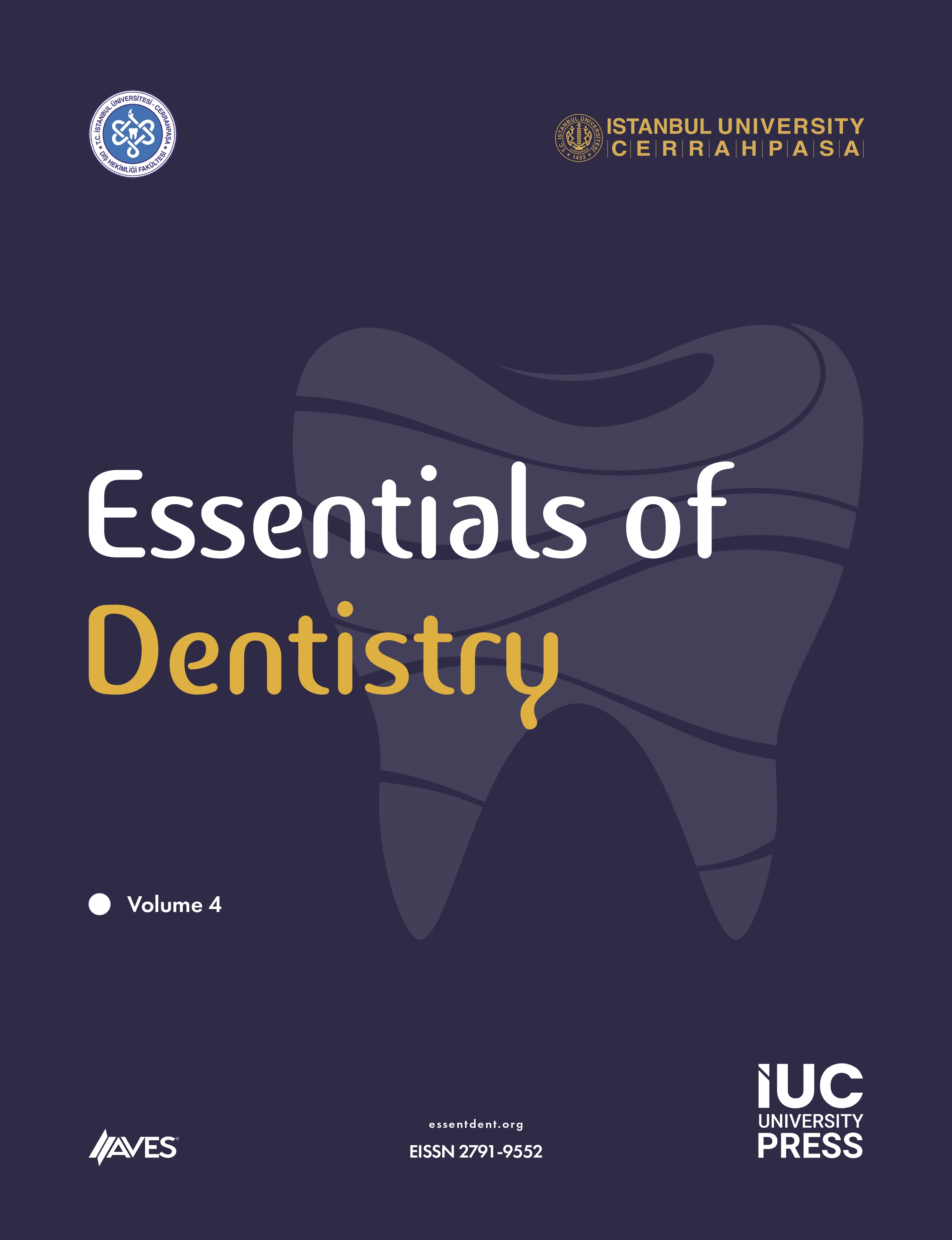Objective: Provisional restorations should not fracture, get deformed, and show discoloration while in use. In our study, 6 different provisional restoration materials were subjected to microhardness test and flexural test in order to measure mechanical strength, surface roughness test, and discoloration test in order to evaluate esthetics.
Methods: Specimens for the 3-point bending test were loaded with a universal testing machine until fracture occurred. Baseline color measurements were made after Vickers microhardness and surface roughness tests. All specimens were immersed in the coffee solution for 7 days. Second color measurements were made and ΔE values were calculated. Statistical analysis of the data was made with Statistical Package for the Social Sciences for Windows 11.5. Kruskal–Wallis test was used in order to evaluate the level of significance (P < .05).
Results: Flexural strength values varied between 146 MPa and 63 MPa. The strongest groups were Imident and Protemp 4. Microhardness and surface roughness evaluation showed methacrylate resins are stronger than other groups. As for color stability, polymethyl methacrylate groups were found to discolor less than other groups. Revotek LC and Protemp 4 showed clinically unacceptable ΔE values (ΔE > 3.3).
Conclusions: Based on this study data, it is advised to use heat-polymerized polymethyl methacrylate when long-term use is indicated.
Cite this article as: Burduroğlu HD, Keyf F. In vitro comparison of mechanical and physical properties of various provisional restoration materials. Essent Dent. 2023;2(1):1-8.






